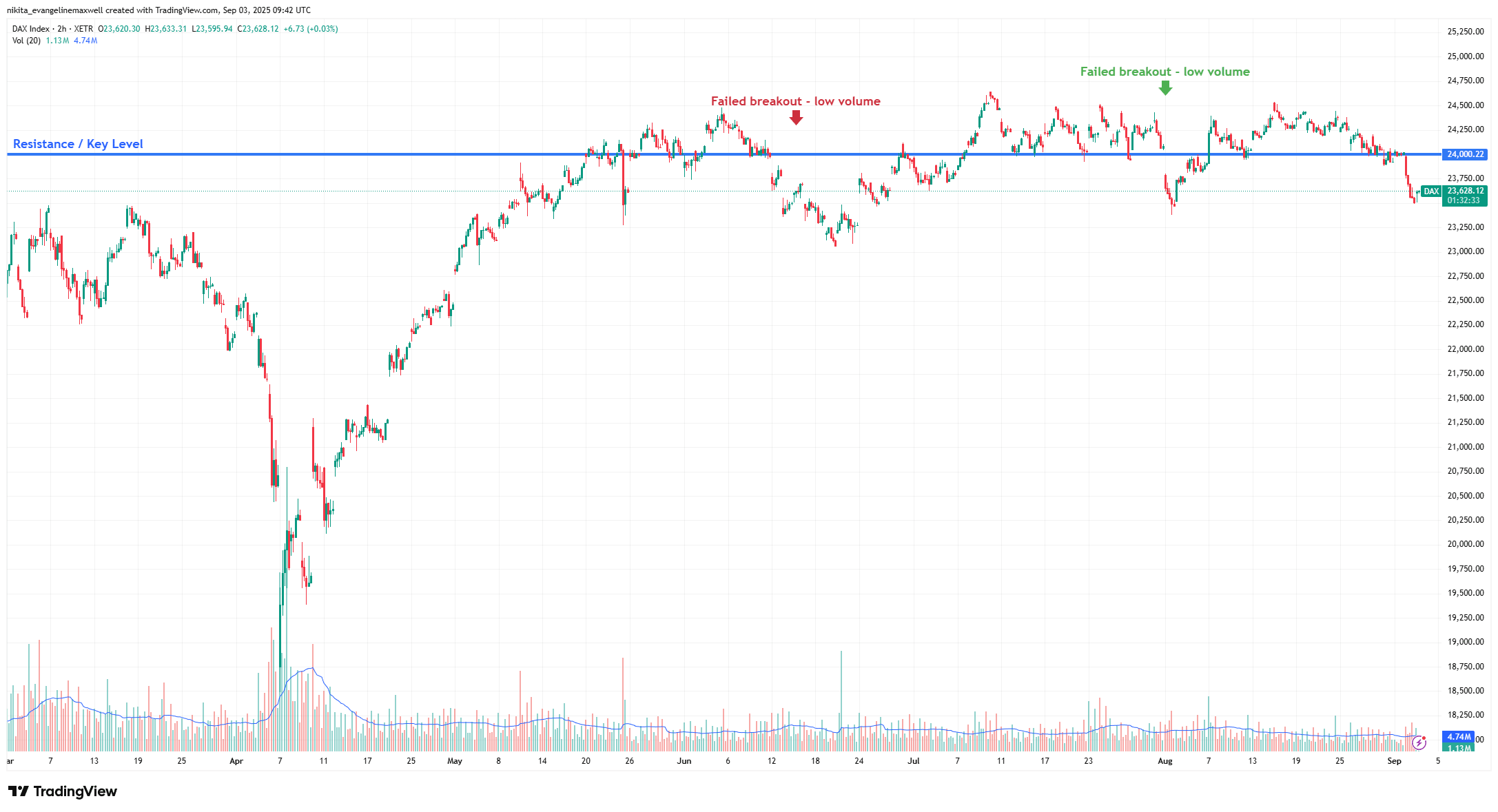Surge in Eurozone Inflation: Price Action at Key Levels
Eurozone inflation has nudged above the ECB’s 2% target, coming in at 2.1%. At first glance, that’s hardly anything, but traders pay attention to small shifts. The reason is because even a modest overshoot can shape expectations around interest rates, and that quickly effects equities. Markets reacted in kind: the STOXX 600 slipped about 1.5%, while the DAX dropped over 2% as investors re-adjusted their holdings. Even a small move in hard data can create a ripple effect on markets.
How It Works – Inflation’s Impact on Markets
Inflation matters less as a headline and more for what it tells us about the ECB’s next step. A reading above 2% suggests rate cuts are less likely in the near term. Over the past year, rates were cut rapidly to 2%. Now the bar for another reduction is clearly higher, and traders know it. Futures markets currently price less than a 50% chance of one more cut this year.
That matters for equities. Higher-for-longer rates tend to weigh on growth sectors, but inflation often throws a spotlight on what we might call the “proxies” – energy, food producers, consumer staples. If oil prices surge, oil and gas shares usually do too. Supermarkets and food brands, meanwhile, can pass higher costs onto customers, leaving them less exposed than, say, tech firms. The August breakdown was telling: food and alcohol up 3.2% YoY, services climbing 3.1%, but energy still down 1.9%. Those details point traders toward where inflation pressure is coming from, and which sectors deserve attention on the charts.
Practical Application – Trading the Moves
This particular overshoot was mild, so the pullback in indices wasn’t crazy. But inflation surprises can sometimes light a fire under markets. Imagine energy driving the jump: suddenly the European oil & gas index is pressing up against an old resistance level. Does it break through? If it does, the real question is whether volume confirms it.
Breakouts Matter More with Volume

Source: TradingView. All indices are total return in US dollars. Past performance is not a reliable indicator of future performance. Data as of 3 September 2025.
The DAX tested 24,000 twice in summer 2025. June’s breakout attempt failed on weak volume, while late July’s move was confirmed by a strong surge in participation.
So the habit to build is simple: confirm the story. If consumer staples or energy shares leap on the back of the CPI print, check whether the move has support – not just in price, but in participation. If everyone piles in, the odds of the move sticking improve. If volume is light and price stalls under resistance, that’s often a fakeout. And remember that markets often pre-position. If the consensus expected a higher inflation number, much of the reaction may already be in the price.
Trader Tips – Best Practices and Pitfalls
- Don’t trade the news. Surprises move markets, not expectations met. If inflation comes in bang on forecast, don’t expect fireworks!
- Dig into the details. Services inflation actually eased to its lowest since 2022, even as the headline ticked up. That sort of nuance can temper ECB reaction and market sentiment.
- Layer your signals. Beyond volume, check trendlines, moving averages, even momentum indicators. If the Euro STOXX 50 climbs above both resistance and its 50-day moving average on strong volume, that’s a stronger case than price alone.
- Plan your exits. Inflation releases can whipsaw. A stop-loss just beyond support or resistance helps limit the damage if the market spins.
Takeaway
A tiny bump in Eurozone inflation doesn’t guarantee fireworks, but it does remind traders of the link between macro data and market structure. Watch how prices behave at those obvious levels, confirm the moves with volume, and you’re far better placed to turn an Inflation surprise into a trade rather than a trap.